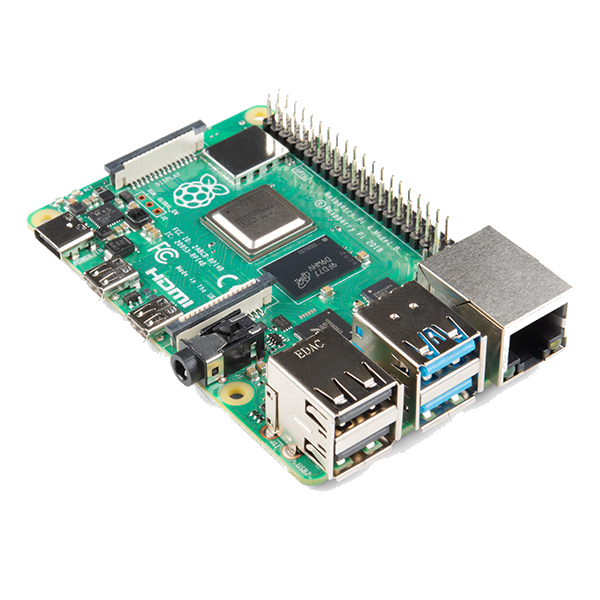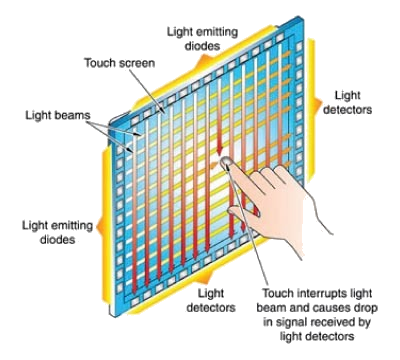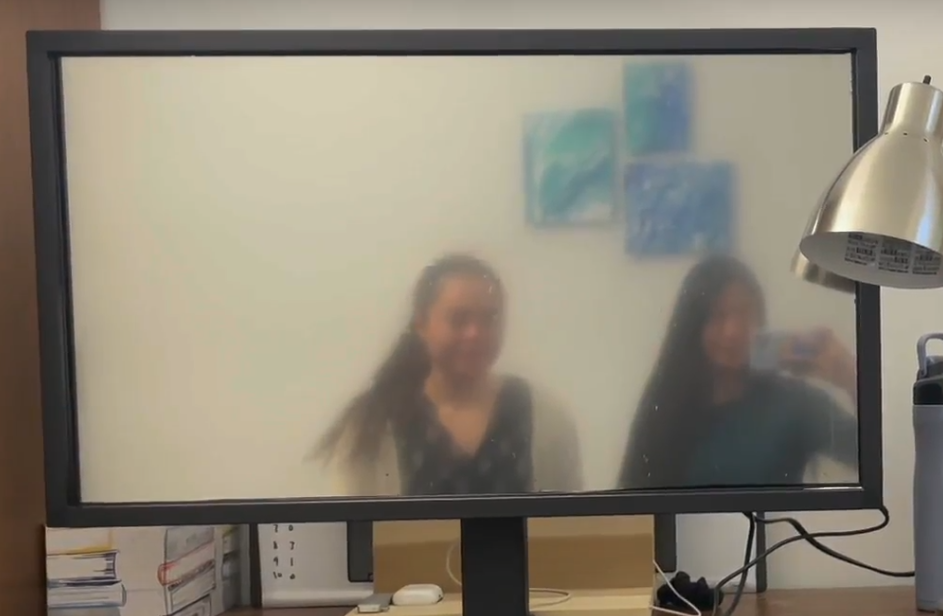

How can you make your own Smart Look?
Smart look was designed for an open-ended user group and we welcome everyone, individuals who are engaging in DIY projects, to try to make your very own Smart Look. Our primary objective for its design was to use open-source softwares and rather inexpensive tools so that our users are not restricted by any licensing and registration access. Additionally, we focused on keeping costs low since we were on a budget, which meant adjusting the size of the mirror and using mirror sheets instead of a dielectric mirror. However, we also have recommendations for materials for those who are not concerned about budget but rather having the best product.

TV or monitor of your choice
*display frame size must match IR frame size for accurate touch experience*

Gives the product a mirror-like experience
*use of dielectric mirror recommended for best mirror experence, must match screen size of display*

Single-board computer used to create smart mirror experience
*Raspberry Pi 4 model with 8GB RAM recommended or use of Rock Pi for best performance*

Retrofit touch screen overlay kit with light-emitting diodes and photoelectric sensors to add multi-touch functionality to any screen technology (IR overlay)
A dielectric mirror, also known as a Bragg mirror, is a type of mirror composed of multiple thin layers of dielectric material, typically deposited on a substrate of glass or some other optical material.
Its semi-transparent mirror coating that transforms it into a mirror when the display is off and it requires no electricity of its own. They allow flawless quality and incredible brightness compared to a two-way mirror(or films), ideal for DIY bedroom and living room mirror tv projects and commonly used for smart mirror applications.
Dielectric mirrors are the ideal mirror-type to A) reduce any reflections or glare on the mirror and B) maximize displayed content brightness when viewing content from any angle. Smart Look originally intended to use dielectric mirrors. However, due to limited expenses and risk of covid-event shipping delays, Smart Look opted into the lower quality one-way mirror films. You will notice that these one-way mirror films are not as "high quality" or reflective as dielectric mirrors. However, they are very cheap and, unlike mirrors, the mirror films are not in a risk of shatter

Choosing a dielectric layer's material and thickness, you can design an optical coating with various levels of reflectivity at different light wavelengths

Also commonly known as two-way mirror films, are different from one-way mirrors. These highly reflective films turns a glass object into a mirror.

Smart Look uses the latest gen Raspberry Pi 4 unit, with 8GB ram installed with the beta WoR OS, which is compatible with the desktop customization tool we are using called Rainmeter.
The primary limitation comes from the SBC used for the project. Raspberry Pi was the most affordable SBC at the time. Smart Look uses a Canakit Raspberry Pi 4 unit equipped with 8GB of ram. For the purposes of replicating Smart Look in your own DIY project a raspberry pi unit with at least 4GB of RAM is highly recommended. Incorporating touch-frames for touch experience, casting video playback, smart mirror applications, a beta Windows OS installation, and other features and applications, a raspberry pi unit with 4GB RAM is sufficient. But do consider purchasing a more epensive Raspberry Pi with more memory, like 8GB RAM, could enable more advanced functionality and a greater number of features for future projects.
Canakit Raspberry Pi 4 SBC 8GB RAM
Heatsinks placed on the highest thermal runoff modules: Broadcom CPU, the memory module, and the USB controller module.
If you raspberry pi unit has onboard WiFi and/or Bluetooth, it will be disabled when OS image flashing the raspberry pi unit with Windows on Raspberry Pi OS
During the start of our project, an official version Windows OS was not available for single-board computers (SBCs for short). We used a WoR, a windows os version still in beta and testing, and in doing so disabled drivers and all the onboard I/O peripheral ports. Additionally, using WoR noticeably slowed the performance of our raspberry pi unit. Our hardware lead created an instruction manual documenting problems, solutions guidelines, system performance enhancement tips, and step-by-step assembly and installation process. This manual can be found on our projects website.
Smart Look design incorporates touch screen capabilities using IR touch overlays, commonly referred to as IR frames. IR touch overlays are a patented device that has many light-emitting diodes and photoelectric sensors on opposite sides chained together embedded on a frame. The diodes emit a grid of infrared beams in a XY-direction. Any interruptions, via any object, like a finger, between the beams of light and the sensors will be interpreted as touch on that interrupted location. IR frames also support multi-touch capabilities and has a fast response time of 1ms. It does not require a driver installation, just a simple USB plug-n-play.
created with
HTML Website Builder .